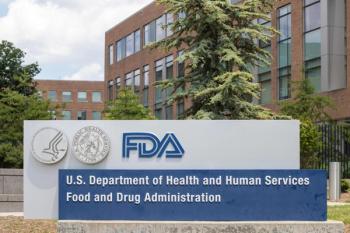
Study: Prevalence and Clinical Implications of MASLD in Type 2 Diabetes
Key Takeaways
- MASLD is prevalent in 59% of T2D patients, with obesity significantly increasing the risk of fibrotic MASLD.
- The EPSONIP study used MRI to assess liver fat and related biomarkers, revealing higher obesity and fat infiltration in patients with MASLD.
New research reveals a significant link between type 2 diabetes, obesity, and fatty liver disease.
Emerging study findings from investigators at Linköping University discovered that 6 out of 10 individuals with type 2 diabetes (T2D) had fatty liver. The study authors, who published their findings in the Journal of Internal Medicine, noted that the results confirm individuals who have T2D in combination with obesity face a greater risk of fatty liver, which could lead to severe liver disease.1,2
Metabolic Dysfunction-Associated Fatty Liver Disease
Metabolic dysfunction-associated steatotic liver disease (MASLD) is a common chronic liver disease that increases the accumulation of fat in the liver and is strongly associated with obesity and T2D mellitus (T2DM). The global prevalence of MASLD is 38% and 55% to 73% in individuals with T2DM.1
“Metabolic syndrome is a combination of factors leading to the body accumulating fat and not managing blood [glucose] levels in a good way. This entails an increased risk of developing secondary diseases, such as type 2 diabetes and cardiovascular diseases,” Wile Balkhed, PhD student at Linköping University and resident physician at Linköping University Hospital, said in a news release.2
Previous research has confirmed that individuals with T2D face an increased risk of developing MASLD; however, the prevalence and severity of MASLD among individuals with T2DM is unknown. To further assess this, researchers conducted the prospective cohort EPSONIP study (NCT03864510), which evaluated the presence of MASLD and cirrhosis of the liver among 308 individuals with T2DM from primary care.1,2
“It’s of great importance to find the few individuals who are at high risk of serious liver disease, because we can do a lot of good for those patients. But it’s like looking for a needle in a haystack. Hopefully, our data will help to find the high-risk individuals among all patients,” Mattias Ekstedt, senior associate professor at Linköping University and consultant in gastroenterology and hepatology at Linköping University Hospital, said in a news release.2
EPSONIP Study Methods and Results
In the study, the researchers used MRIs to assess liver fat, cardiac function, muscle composition, and distribution of body fat. Following, they assessed MRI biomarkers and their link with advanced fibrosis and hepatic fat infiltration in individuals with and without MASLD.1
The results demonstrated that among the 308 individuals, 59% had MASLD, 7% had suspected advanced fibrosis, and 1.9% had cirrhosis. Compared with individuals without MASLD, the body mass index was greater among the 59% with MASLD, with a higher prevalence of obesity.
Additionally, higher amounts of visceral and abdominal subcutaneous fat, along with fat infiltration in their muscles, were reported in individuals with MASLD. The MRI scans also revealed that MASLD individuals had a reduced left ventricular stroke volume index, a lower left ventricular end-diastolic volume index, and increased left ventricular concentricity. Further results confirmed in a multivariable analysis that obesity increased the risk of fibrotic MASLD 8-fold.1,2
“People with both [T2D] and obesity are a group at particular risk that health care should prioritize in future efforts. In our study, 13% of this group had early-stage scarring of the liver, which was a much larger proportion than the 2% of the group with [T2D] without obesity,” Balkhed said in a news release.2
Although the results display that advanced liver disease is uncommon in primary care individuals with T2D, especially those who are not obese, 10% of individuals with obesity and T2D had suspected advanced fibrosis, emphasizing screening for this patient population.1,2
“The finding is important for determining whether patients with type 2 diabetes should be screened for liver disease," Balkhed said in a news release. "Several international organizations recommend it in their guidelines, but such screening has not been introduced in Sweden."
REFERENCES
1. Balkhead W., Bergram M., Iredahl F., Holmberg M., Edin C., Carlhall C., Ebbers T., Henriksson P., Simonsson C., Radholm K., Cedersund G., Forgren M., Leinhard O., Jonsson C., Lundberg P., Kechagias S., Dahlstrom N., Nasr P., Ekstedt M. Evaluating the prevalence and severity of metabolic dysfunction-associated steatotic liver disease in patients with type 2 diabetes mellitus in primary care. Journal of Internal Medicine. June 16, 2025. Accessed June 17, 2025. doi: doi.org/10.1111/joim.20103
2. Fatty liver – but not liver damage – common in type 2 diabetes. EuerkAlert!. News release. June 17, 2025. Accessed June 17, 2025. https://www.eurekalert.org/news-releases/1087568
Newsletter
Stay informed on drug updates, treatment guidelines, and pharmacy practice trends—subscribe to Pharmacy Times for weekly clinical insights.

















































































































































































































